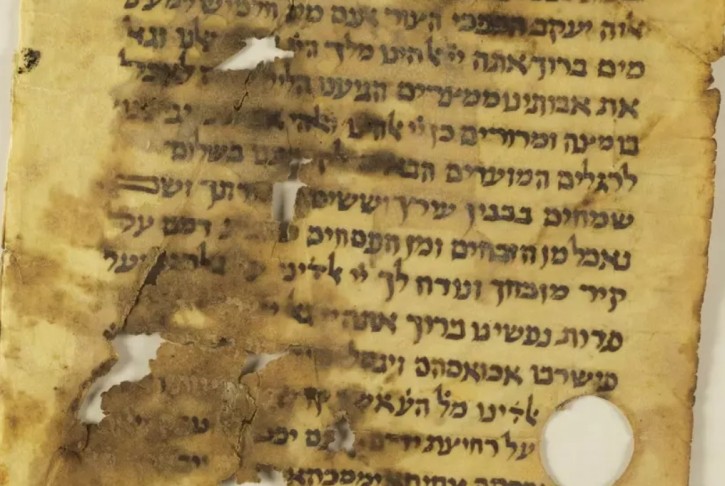(Haifa, Israel 2018) – The Scribes of the Cairo Geniza project unveiled a Haggada from the 10th-11th centuries that offers a rare glimpse into the Jewish customs of the Middle Ages.
The unique Haggada provides the Seder instructions in Judeo-Arabic, the Arabic spoken by Jews, written with Hebrew letters.
Additionally, the blessing for washing the hands as is known today, “al netilat yadayim,” is written instead as “al rehitzat yadayim,” a subtle but significant difference indicating that the Haggada follows the Eretz Yisrael tradition of Judaism, which disappeared from the world around the 12th century.
The Cairo Geniza is a collection of more than 400,000 Jewish texts that were found in the storeroom of the Ben Ezra Synagogue in Fustat (Old Cairo) in Egypt. A geniza is a storeroom for old books, Torah scrolls and other sacred texts in the Jewish tradition.
These texts reveal Jewish Middle Eastern and North African history and constitute one of the largest and most diverse collections of medieval manuscripts in the world.
“The hundreds of thousands of documents from the Cairo Geniza continue to provide us with unmediated information about Jewish life in the Middle Ages,” Dr. Moshe Lavi, head of the Cairo Geniza Center at the University of Haifa, which partners with the international project Scribes of the Cairo Geniza, said on Wednesday.
“It is fascinating to see again and again how our traditions have changed over the years and to what extent they remain almost the same,” he said.
Many of the texts have been digitized, though the vast majority remains undeciphered. The Scribes of the Cairo Geniza project, in which the Eliyahu Laboratory at the University of Haifa takes part, includes the University of Pennsylvania Libraries, the Princeton Geniza Lab, the Library of the Jewish Theological Seminary, and the Geniza Research Unit at Cambridge University Library, in collaboration with the general public.
The Haggada, of which two pages were unveiled ahead of Passover by volunteers taking part in the international project, is housed in the Library of the Jewish Theological Seminary in New York.
According to Vered Raziel-Kretzmer of the Eliyahu Laboratory at the University of Haifa, the fact that the Haggada is written on a square parchment indicates its antiquity.
“Beginning in the 10th century the Sephardi Jews began to write on paper, and in the 12th century the use of parchment in books was almost completely abandoned,” she said.
She added that the parchment, together with the almost square shape of the pages and the shape of the letters, indicate that the Haggada is from the 10th or 11th centuries.
“This makes it one of the oldest surviving Haggadot in the Geniza and in general,” she said.
On the second page of the Haggada, another Eretz Yisrael tradition is revealed. On the top of the page, the title “Psalm at the end of Passover” is written, followed by Psalm 126, also known as the “Great Hallel.”
According to this custom, at the beginning of evening prayers of each holiday, a special psalm is said for that holiday.
As such, on the seventh day of Passover, this psalm was recited, which indicates that the Haggada was intended to be used for the entire Passover holiday, and not only the Seder.
At the bottom of the Haggada, there is an inscription, most likely from the owner, which reads: “This is the siddur of Yosef ben Amroom, may he live long, by his name, amen and amen.”
